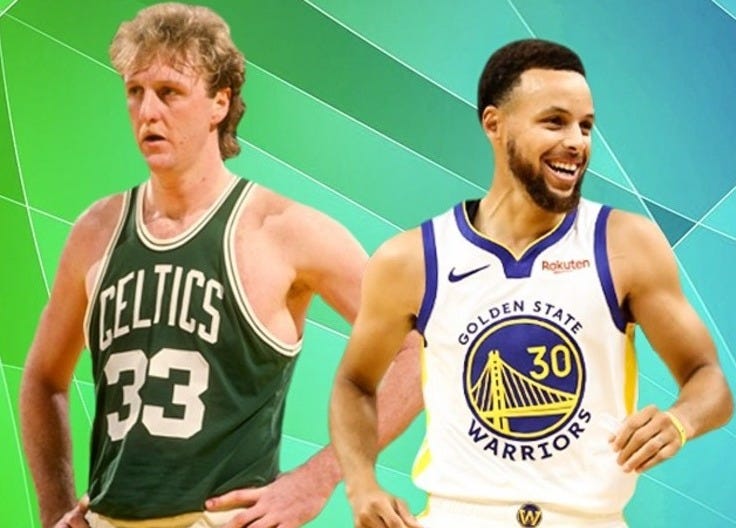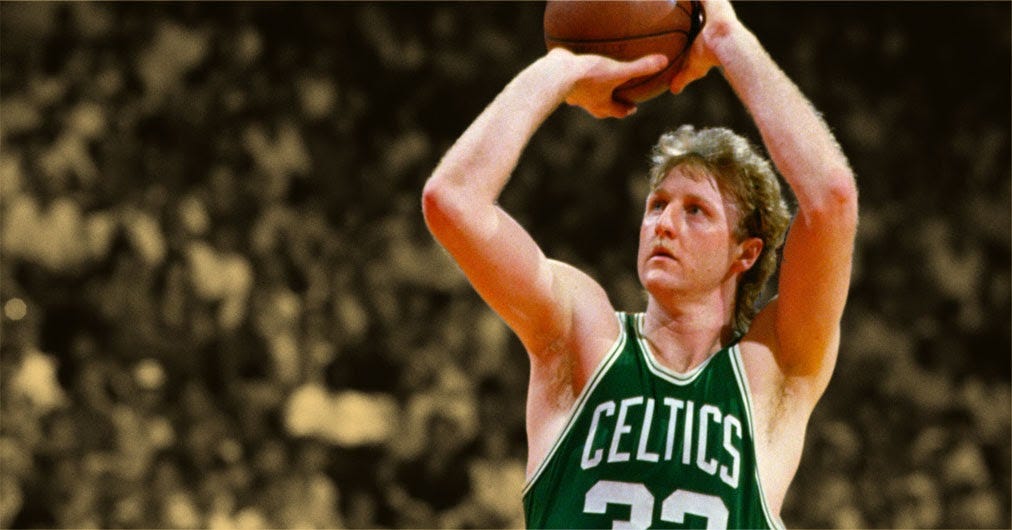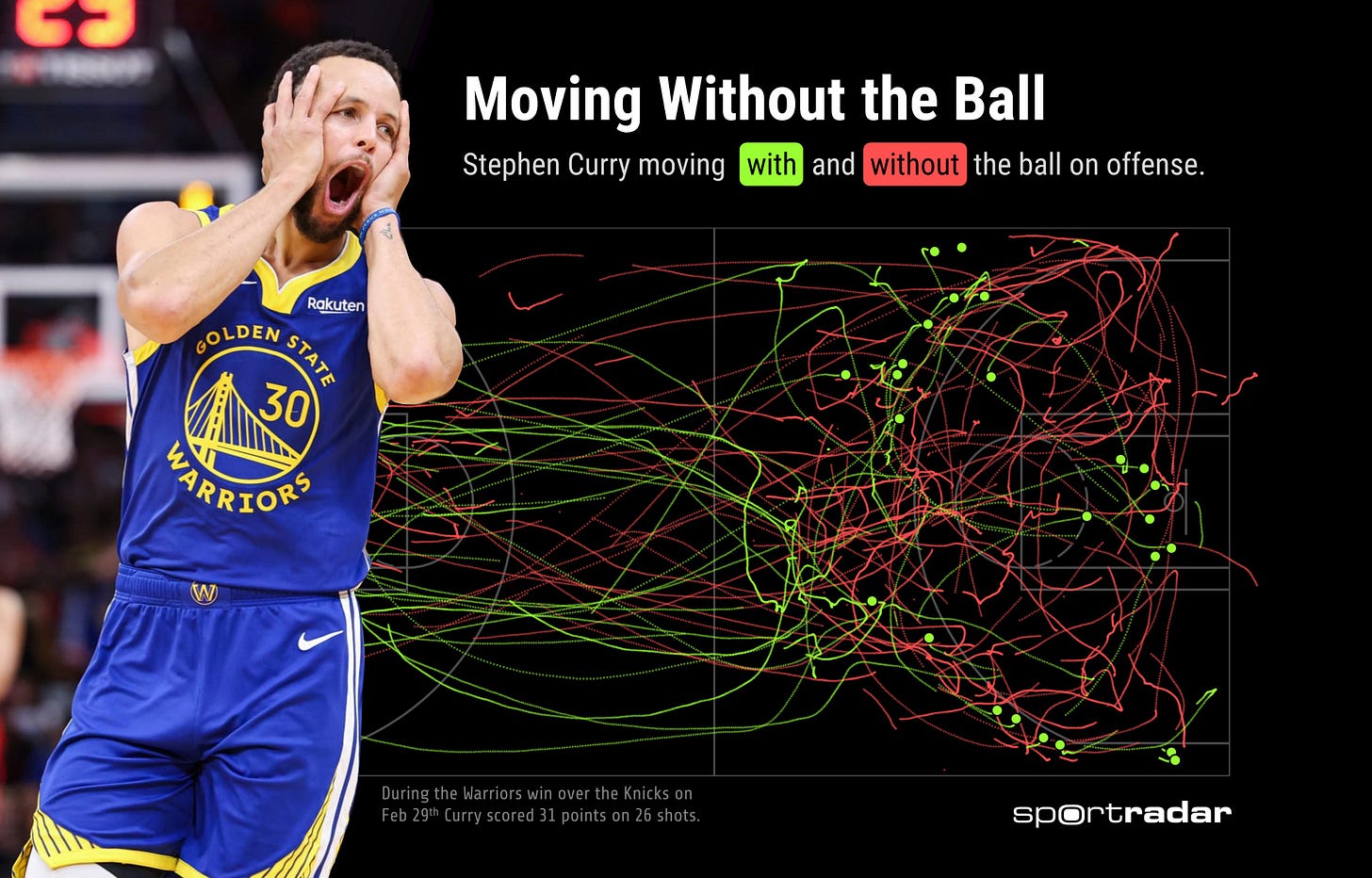The Move I Never Learned
I was 12 when I realized I was going to be a professional basketball player. I was 14 when I realized I wasn't.
It happened the summer before my freshman year. I had court vision, a smooth jumper, the feel. I was that kid being recruited, lighting up scoreboards, threading passes through traffic, leading average teams to upset wins against squads loaded with players who lived and breathed basketball to survive. I knew I could dominate high school ball, probably play college; I was also a strong tennis player with college prospects. But the NBA? That was slipping away, and I didn't know how to take it up a notch.
Back then, there was no Instagram, no YouTube, no window into Kobe's 4 AM workouts or MJ's psychotic game-day rituals. I heard whispers, Bird making 500 shots before breakfast, running stadium stairs in the dark, but it all felt like mythology. I didn't understand that greatness had a mathematics to it. That obsession was the entry fee, not the bonus round.
I messed it up. I didn't lean in when I had the chance. I didn't double down when the dream was still warm in my hands. Sometimes I wonder what would've happened if I'd known then what I know now, about repetition, about compounding, about how greatness isn't a gift you receive but a lifestyle you choose to endure.
Through it all, it was Larry. Larry was my guy. I lived in Boston in the 1980s and I remember everything about that 1986 Celtics team. The wins, the heartbreaks, the fistfights. Larry mixing it up with Bill Laimbeer. Larry stealing the ball and feeding DJ to break Detroit's heart. I remember Magic's Lakers crushing us in '87, I actually cried. I remember when Larry hurt his back against the Pacers and Chuck Person, and at halftime I ran to my driveway, imagining myself subbing in, helping mount the comeback, then feeding him for the dagger.
And then he actually did it.
I used to dream about playing alongside Larry Bird and Len Bias. I remember exactly how I felt when we got the news that Len had died. Just like when Magic announced he had HIV, I thought about how Larry must have felt that day. He had worked so hard, and now his greatest rival was gone, his most promising teammate was gone. It was all connected for me. Basketball wasn't just a game, it was mythology you could step into, if only for a moment.
I never learned Larry's signature move. Or Jordan's fadeaway. Or Kareem's skyhook. I never developed the obsession that separates dreamers from legends.
But I never stopped watching. And what I've been watching lately isn't just changing basketball, it's rewriting what I thought I knew about greatness itself.
Basketball has always been a game of signature moves that define not just players, but entire eras. Kareem's skyhook wasn't just a shot; it was a monument. Jordan's fadeaway was poetry written in the air, an exclamation mark that said "you can't stop this." Hakeem's Dream Shake turned footwork into illusion. Dirk's one legged fadeaway extended a 7-footer's release point into mathematically untouchable territory. Kobe turned Jordan's fade into religion, adding angles and audacity.
All of them etched moves into our collective basketball consciousness.
But then came Steph. And Steph didn't just add a move to the catalog. He subtracted the game beneath it.
His pull-up threes made defenders look helpless, but it was what happened after he gave up the ball that rewrote everything. The relocate.
It sounds deceptively simple: he passes and moves. But that movement, the sprint-reposition-catch-fire cycle, is revolutionary. Most players catch their breath after passing. Steph hits the gas. He drags defenders through off-ball screens, sprints to new angles, forces rotations, turns ball reversals into high efficiency kill shots.
The relocate is Steph's real signature, and it's the most unguardable play in basketball because it's not technically a play at all. It's a tempo. A pattern. An ecosystem. The Warriors' offense isn't built around dominant isolation scoring, it's built around chaos, with Steph as the eye of the storm, the still point that destabilizes everything else.
Here's the thing: even with all the footage, all the coaching clinics, all the skill development programs, almost nobody else does it. Not because they don't want to. Because they can't.
The relocate requires an absurd level of conditioning. Steph runs an average of 2.8 miles per game, more than most people run in a week, and he does it while making split-second decisions under playoff pressure. You can't move like that if your lungs are shot or your feet are wrecked. You can't shoot like that if your form breaks down under fatigue. His cardio is elite. His biomechanics are bulletproof. His recovery work, weightlifting, nutrition, all calibrated to allow him to move that much, shoot that cleanly, for 82 games and deep playoff runs.
The relocate is a system built on pain tolerance, durability, and maniacal discipline.
Think of it like this: Steph's movement creates invisible spikes in value across the floor. He isn't just shooting threes, he's moving defenders 18 feet out of position before he even touches the ball. Every sprint adds volatility to the defense. Every relocation recalibrates defensive geometry. His presence bends strategy like gravity around a neutron star.
Most of the time, the shot isn't even the most impressive part. It's the chaos that made it clean.
What Steph did, in the deepest sense, was make greatness more democratic. Not easier, just more accessible in theory. He made a version of professional basketball viable for players who might have been laughed off the court in previous decades. You don't have to be 6'8" with a 40 inch vertical. You don't have to be built like LeBron or fly like Jordan.
If you can handle the ball, shoot with speed and accuracy, and stay in relentless motion, you have a shot. You still have to be world-class, but it's a different kind of world class now. Guys like TJ McConnell and Payton Pritchard don't exist in the 1990s. In 2025, they get playoff minutes. They live in the church Steph built.
But here's the uncomfortable truth: Steph Curry has ruined more basketball dreams than he's inspired.
The next wave of kids is learning the wrong lessons. They're launching 28-footers without earning them. They see the highlights, not the hill work. The makes, not the mileage. Every AAU tournament is now a long-range shooting contest, with 12-year-olds pulling up from the parking lot while parents scream "good shot!" from the bleachers.
They think they're the next Curry. They're not even close to being the next TJ McConnell.
This isn't new, exactly. John Stockton was a silent killer who ran miles within Jerry Sloan's structured offense. Mark Price had range and IQ. Steve Nash was the closest pre-Steph archetype, 50/40/90 seasons, constant motion, playmaker's vision, but never green-lit to fire at Curry's volume. Jeff Hornacek, Brent Barry, Damon Stoudamire were early fragments of something the league didn't yet know it needed.
Steph took those pieces and evolved them. Like Kobe studied Jordan's fadeaway and broke it into sub-moves and counter-angles, Steph studied the old movers and shooters and installed his own firmware on top. He probably has notebooks full of shooting logs, daily makes and misses tracked, miles run, soreness monitored. The relocate isn't instinct, it's engineered.
That's what people miss. They think he's just running around. He's not. He's executing thousands of micro decisions per game, mapped against timing, spacing, opponent weaknesses. It's all been prepped. Pre-loaded. He's just hitting "execute."
Jordan set the standard for obsession. Bird was a psycho competitor who once injured himself working out on his own driveway and still showed up to camp ready to kill you with fundamentals and fire. Kobe made obsession into gospel. But Steph, for all his smile and joy, lives in that same darkness. He just wears it lighter.
His conditioning is a weapon. His repetition is religion. His movement is rebellion against stillness, against predictability. That's why it's so hard to copy. Not because it's secret, but because it's exhausting.
Curry made the invisible visible. He made off ball movement not just effective but central. He gave kids without elite bodies a reason to believe. But he also set a bar so high in terms of discipline and conditioning that few will ever clear it.
The relocate is both an invitation and a warning: this door is open, but you better be ready to bleed to walk through it.
I understand this obsession because I once lived a smaller version of it. I felt that dream in my hands and let it slip away. I know the difference between wanting something and needing it badly enough to reshape your entire existence around it.
When I watch Steph sprint from corner to corner, bending defenses with pure movement, I see the path I never took. The commitment I never made. The lifestyle I never chose to endure.
So when we talk about signature moves; the fadeaway, the skyhook, the crossover, the drop step, don't forget the one that happens when the ball is no longer in Steph Curry's hands. Because that's when the real magic begins.
That's the move I never learned. And the one I'll never stop watching.
Every generation gets the basketball hero it deserves. We got a 6'3" point guard who taught us that greatness isn't about being superhuman, it's about being obsessively, relentlessly human.
If this piece meant something to you, share it with someone who used to dream on the driveway. Or someone still chasing the echo of that first perfect swish. We all had our moment. This was mine. You can find me on twitter at @MrMojoRisinX.






